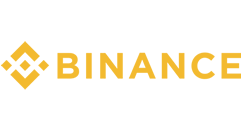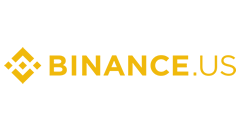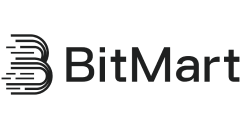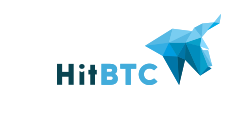Ontology Gas
$0.09295800
0.09290000
$40,205,875
Total Market Cap
1,000,000,000 ONG
Circulating Supply
$3,503,555
24h Volume
$40,205,875
Total Market Cap
1,000,000,000 ONG
Circulating Supply
$3,503,555
24h Volume
$40,205,875
Total Market Cap
1,000,000,000 ONG
Circulating Supply
$3,503,555
24h Volume
$40,205,875
Total Market Cap
1,000,000,000 ONG
Circulating Supply
$3,503,555
24h Volume
| # | Signal | Exchange | Type | Age |
|---|


| Logo | Exchange | Price | Pair | Spread | 24h Volume |
|---|---|---|---|---|---|
 |
Binance | $0.0929 | ONGUSDT | $0.00 | $1,127,983 |
 |
Binance.us | $0.09 | ONGUSDT | $0.01 | $54 |
 |
BitMart | $0.0929 | ONG/USDT | $0.00 | $362,512 |
 |
Crypto.com | $0.09304 | ONG/USD | $0.01 | $0 |
 |
HitBTC | $0.09005 | ONG/USDT | $0.00 | $0 |
Ontology Gas (ONG) is the utility token that powers the Ontology blockchain infrastructure. ONG serves as the transaction fee mechanism and resource management token within the Ontology ecosystem. While the main Ontology (ONT) token represents governance rights and stake in the network, ONG plays the complementary role of fueling all operations on the network, similar to how Gas works for NEO or Ether for Ethereum transactions.
Launched alongside Ontology's mainnet in June 2018, ONG was designed to create a sustainable economic model for the Ontology network. By separating governance (ONT) from utility (ONG), the system aims to provide more stability and predictable costs for using the network's resources.
ONG functions as the utility token within the Ontology ecosystem through a dual-token model:
The Ontology blockchain operates with two native tokens:
When users deploy smart contracts, execute transactions, or utilize network resources on Ontology, they pay fees in ONG. This creates an inherent demand for ONG tokens and helps maintain the network's security and functionality.
ONG operates on Ontology's high-performance blockchain which uses a modified Delegated Byzantine Fault Tolerance (DBFT) consensus mechanism called VBFT (combining Verifiable Random Function with BFT). This allows the Ontology network to achieve high transaction throughput while maintaining security, with ONG facilitating all activities within this ecosystem.
Unlike traditional staking models, ONG itself isn't staked. Instead, users stake ONT tokens to generate ONG rewards. This unique approach creates a relationship between the two tokens where:
By staking ONT in authorized wallets, users participate in Ontology's consensus by selecting consensus nodes, while simultaneously earning ONG as rewards.
Ontology Gas (ONG) cannot be mined in the traditional sense like Bitcoin or Ethereum. Instead, ONG is generated and distributed through a predetermined schedule tied to ONT holdings. The total supply of ONG is capped at 1 billion tokens, which are gradually released over approximately 22 years.
This generation mechanism can be viewed as a form of "passive mining," where ONT holders receive ONG without needing specialized hardware or actively running mining operations. This approach significantly reduces the environmental impact compared to proof-of-work mining systems.
Ontology Gas (ONG) serves several key purposes within the Ontology ecosystem:
Beyond basic network operations, ONG plays crucial roles in:
Unlike many cryptocurrencies that conducted ICOs, Ontology Gas (ONG) had a unique distribution model:
ONG is released according to a decreasing-rate schedule:
This gradual release mechanism was designed to ensure long-term ecosystem sustainability and prevent market flooding.
ONT holders must manually claim their generated ONG through compatible wallets. This claiming process itself requires a small amount of ONG to cover transaction fees, creating an initial bootstrapping challenge that Ontology addressed through various community initiatives.
Investors interested in Ontology Gas (ONG) can trade it on numerous cryptocurrency exchanges. For those seeking an automated approach to ONG trading, Cryptohopper offers a sophisticated trading bot that can execute ONG trades according to customized strategies. This allows for 24/7 ONG trading without manual intervention, potentially capitalizing on market opportunities at any time of day.
Below are the most popular denominations to convert to USD and back into ONG
| ONG | US Dollar |
|---|---|
| 0.01ONG | 0.00USD |
| 0.1ONG | 0.01USD |
| 1ONG | 0.09USD |
| 2ONG | 0.19USD |
| 3ONG | 0.28USD |
| 5ONG | 0.46USD |
| 10ONG | 0.93USD |
| 25ONG | 2.32USD |
| 50ONG | 4.65USD |
| 100ONG | 9.30USD |
| 250ONG | 23.24USD |
| 500ONG | 46.48USD |
| 1000ONG | 92.96USD |
| 10000ONG | 929.58USD |
| 50000ONG | 4,647.90USD |
| 100000ONG | 9,295.80USD |
| US Dollar | ONG |
|---|---|
| 0.01 USD | 0.10757546ONG |
| 0.1 USD | 1.07575464ONG |
| 1 USD | 10.75754642ONG |
| 2 USD | 21.51509284ONG |
| 3 USD | 32.27263926ONG |
| 5 USD | 53.78773209ONG |
| 10 USD | 107.57546419ONG |
| 25 USD | 268.93866047ONG |
| 50 USD | 537.87732094ONG |
| 100 USD | 1,075.75464188ONG |
| 250 USD | 2,689.38660470ONG |
| 500 USD | 5,378.77320941ONG |
| 1000 USD | 10,757.54641881ONG |
| 10000 USD | 107,575.46418813ONG |
| 50000 USD | 537,877.32094064ONG |
| 100000 USD | 1,075,754.64188128ONG |